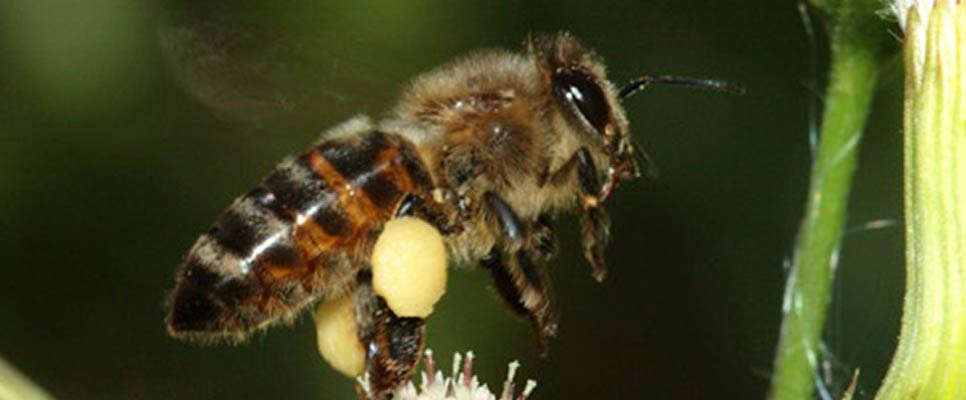Description:
A yellow banding on the abdomen and fine, noticeable hairs all over the body are prominent features that help identify European honey bees. Its size is between 13 and 16 mm, and its hue may change. Their antennae are just slightly longer than their heads, and their wings are light brown with dark veins. European honey bees are a social species that live in colonies of between 40,000 and 80,000 bees. They prefer to build their nests in hollow objects, such as house walls or hollow trees and subsequently create similar wax structures inside of their hives to house storage spaces and their progeny. Swarming may occur once or twice a year, depending on a variety of factors, such as health, environment, and floral supplies.

Appearance:
A European honey bee can reach a length of 3/8 to 3/4 of an inch. It is normally brown or black with yellow streaks on its abdomen and has 2 pairs of wings. The largest bees are queen bees or fertile females. Male drones are medium-sized, robust, and have noticeably bigger eyes than their female counterparts. Small, sterile female worker bees have stinging stingers and unique hind legs that serve as pollen baskets.
Life Cycle of European Honey Bees:
In the spring and summer, mating happens close to bee colonies. The queen bee, only one female in the hive capable of procreation, will fly around groups of hives, both her own and others, in droves. She will mate mid-flight and draw drones to her with her pheromones. The drones will drop from the sky and perish shortly after mating. Eggs turn into larvae around 3 days after being deposited, and worker bees take care of them. Female bees can transform into worker bees or queen bees while in the larval stage if they are given royal jelly. Although queen bees can survive up to five years, worker or drone bees typically have life spans from a few weeks to a few months.
Habits:
Eggs, larvae, pupa, and adults are the four stages of development for European honey bees. Drones reach maturity after 24 days, and workers after 21 days. Queens reach sexual maturity the quickest—usually in 15 to 16 days. Like other bees, Western honey bees are known to sting. However, only female worker bees sting, and only when they are provoked or feel intimidated. Even though they hurt, most stings do not cause harm unless a person has an allergy. A severe allergic reaction called anaphylaxis can occasionally result in death; this is generally followed by respiratory failure. This only happens in 1% of cases, mostly involving those over 40 who were bitten in the face or head. Even then, it only happens in a small percentage of those cases.
